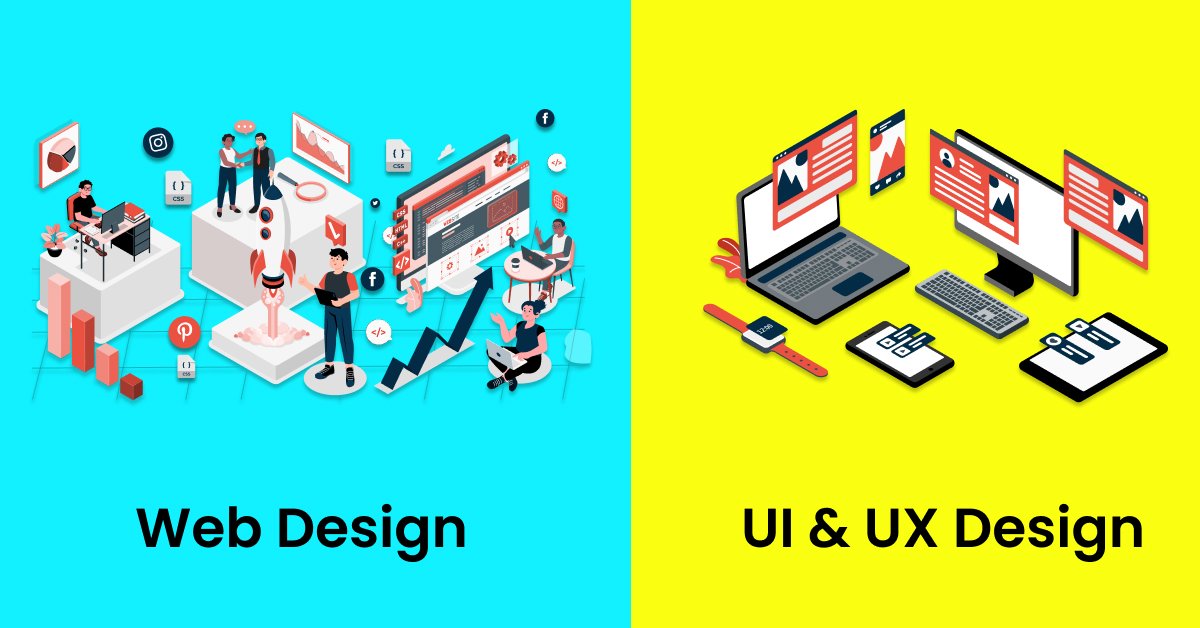Designing for the Web differs from creating conventional user interfaces for applications. In general, designers must let go of control and share responsibility for the interface with the users and their equipment and software. Obviously, there are certain commonalities in designing specifically for Web and conventional GUI design. They are based on software, not the physical designs of objects.
What is Web Design?
In the beginning, “Web design” is a term previously used to describe the process by which only one person is the sole person in charge of the designing process while designing a site. Before 2015, Web designers were the sole person responsible for creating, but they didn’t perform the “Research” tasks on each project.
It is a lot more effective. Web design was not focused on addressing business problems, but instead on meeting the needs of users, which is why it failed to provide complete happiness. Each decision was based on personal experiences and not based on a thorough analysis as it ought to be. Therefore, the division in web design is beneficial as it lets different design types focus on their own specific needs and issues, resulting in more positive results.
What is GUI for Web Developers?
The graphic user interface, also referred to by the name of GUI, is a type of user interface that lets users engage with devices through audio or graphical icons, such as primary notation, in place of text-based user interfaces and command labels that contain typing characters or navigation based on text.
What are the similarities between GUI Web Interface Design and GUI Web Interface Design:
- *Both designs are created by software
- *Both are Interactive
- Both are highly visual experiences shown on screens
What is the Difference Between Web Design and GUI Design?
1. Devices
The features of devices that interact with users, such as monitors and modems, are clearly defined within the GUI layout. The screens appear precisely as they’re described.
In Web design, the devices used by users may range from mobile devices to workstations with high-end features. It is made by software and hardware.
2. User Focus
GUI-based systems are usually highly well-defined and provide information about processes and transactions.
The Web is a source of information and navigation.
3. Data and Information
When using a GUI program, information is created and used by reliable and trusted sources.
The Web is filled with unreliable websites, and content is often highly unstable within companies.
4. User Tasks
In a GUI system, customers are able to set up and configure, customize the program, start using the software, update it, and become familiar with some of its features.
Users of the Internet are accountable for the following actions: connecting to websites that allow browsing or reading and filling out forms and registration for services and transactions, downloading and saving pages, conserving the pages and saving the pages, etc.,
5. User’s Conceptual Space
With GUI, the application and applications control the user’s mental space.
The Web’s world of users is enormous and sometimes needs to be organized.
6. Navigation
The GUI lets users navigate organized menus, including tree-like lists, wizards, and lists, along with dialogs.
Internet users browse through bookmark links as well as write URLs.
7. Context
GUI systems permit users to have a more excellent knowledge of context and limited options for navigation.
Web Pages is an entity offering virtually endless options for navigation.
8. Response Time
Its GUI reaction time is close to instantaneous.
The Web determines it by the transmission speed, page content, and so on.
9. System Capability
Its capabilities as GUI systems are limited by the hardware capabilities as well as the capabilities of the software.
Web browsing has become more limited because of restrictions set by software that is hardware-based, as well as web browsers.
10. Task Efficiency
GUIs are targeted toward an audience who is doing a task, and the efficiency of the task can be extended.
Web-based systems carry out tasks that are restricted by the network and browser. Websites are intended for everyone.
Also, Read Web Design Tips
Device Diversity
A particular Web style will look different on different devices. WYSIWYG is no longer in use. However, the fact that different designs appear differently isn’t a problem, since the ideal user experience depends on modifications to meet the requirements of each device. The more basic device, or the basic ones. The more stringent the conditions must be met to allow Web content to transform to make it suitable to the platform. The only way to achieve this is for designers to give up all control of their sites and let the appearance of their websites depend on the interaction of the specifications for the preferences and page settings and other aspects of the device utilized by users.
The User Controls Navigation
On the Web, the user is the primary factor determining their web page navigation. Users may explore paths that the developers still need to design. Getting directly into the site’s core is possible by using the internet’s search engines without visiting its home page. Users can modify their bookmark menus and even use them to create a custom website user interface.
Web designers must be able to allow users to navigate in a controlled manner. Sometimes, it is possible to make users follow specific routes and prevent visitors from linking to particular websites. However, websites that do this look tame and unprofessional. It is ideal for the movement of users with no restrictions. For instance, you can place images (linked on the home page) on the front of each webpage to give context and info to users navigating directly onto the webpage.
Part of a Whole
Users can move between sites rapidly on the Web, as the boundaries between different design styles (i.e., websites) are very fluid. It is typical to observe users spending less than one hour on any site, and the user’s navigation typically will take them from one website to the next site every time they visit hyperlinks. People want to avoid reading the manuals or other assistance materials on particular websites; however, they would like to access the site using the Web methods they’ve encountered due to their experiences using other sites. In research on usability, users will be quick to complain that they will not visit websites that use too many working methods. Furthermore, the Web generally has evolved into a category where each website is viewed per the rules defining the genre.
Conclusion
The old-fashioned GUIs are also components of a more extensive system, but it is advised to follow the guidelines on style set out by the firm. The principle is that the weight of individual designs and the overall shifts towards the whole regarding Web designs. But there aren’t any Web Styleguides for a design that explains how designers can use their design language to create websites that match the overall style. We are strong supporters of having a set of formal standards for Web design guidelines; However, since the Web does not have any, my suggestion for Web designers is to build that is compatible with other sites on the internet and realize that your site isn’t located in the central world that users inhabit. They will navigate between areas, and allowing users to connect to every new website they go to is essential. Get in touch with Denver web design company for more information.

